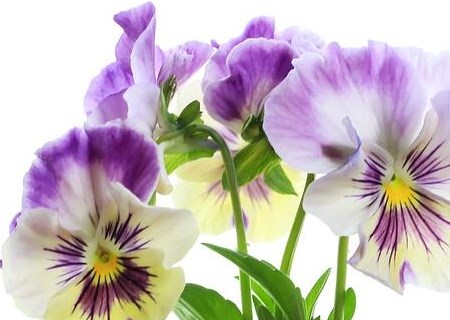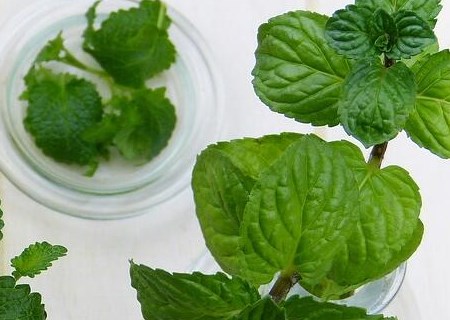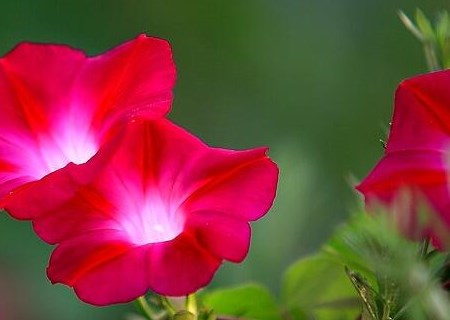What are the seed planting methods of perennial herb pansy? When will it be planted? And Corydalis and Corydalis
Tricolor pansy is a perennial herb, each flower usually has purple, white, yellow tricolor, hence the name pansy. Tricolor oysters are suitable for open-air planting, regardless of flower beds, gardens and potted plants. Do you know what are the seed planting methods of pansy? When will it be planted? What is the difference between Corydalis and Corydalis? What are the effects and effects? Traditional Chinese medicine Corydalis tricolor can also be sterilized to treat acne, acne and allergy problems on the skin. Pansy tricolor medicine bath also has a good breast enhancement effect.

Seed planting method of Pansy tricolor
Pansy is generally sown by sowing in early September, requiring that the soil in the seedbed or sowing basin must be well drained, and the soil covered after sowing is twice as much as the seed, sprinkle enough water with a fine spray pot and put it in a place with plenty of light.
The optimum temperature for germination of Pansy tricolor is 18 ℃ 21 ℃. Under the condition of avoiding light, the optimum temperature for germination is 10 min, and the optimum temperature for growth is 10 mi 13 min. It blossoms 15 weeks after sowing. If the temperature is too high during sowing, it will seriously affect seed germination and seedling growth, resulting in low seedling rate. Usually, two methods can be used to reduce the temperature: one is to use a germination chamber or artificial cooling to create a suitable germination temperature and humidity, and then move the seedlings to a seedling shed with temperature curtains and good shading and ventilation conditions, so that the seedlings can grow normally, and the other is to make use of alpine mountains to raise seedlings in high mountains under the climatic conditions of natural low temperature above 700 meters above sea level in the Yangtze River basin.
The seeds of tricolor pansy can be covered with vermiculite after sowing, the soil temperature is 18 ℃ and 24 min, the medium is moist, and the radicle does not need light before it grows. Generally, 7 Mel can emerge in 14 days. The soil temperature in the growth stage of Pansy tricolor seedlings is 15 ℃ 24 min. The lower the temperature is, the slower the plant growth is, and the stronger the plant is. Let the soil dry before watering but avoid permanent withering of the plant, which is beneficial to the growth of tricolor pansy roots. The ph value of the soil was kept at 5.5 ~ 5.8, and some n fertilizers or potassium nitrate fertilizers were applied alternately.
The difference between Corydalis, Corydalis and Corydalis
Pansy tricolor
Pansy (scientific name: ViolatricolorL.) is a biennial or perennial herb of Corydalis, Viola and Viola. Basal leaf blade long-ovate or lanceolate, long-stalked, cauline leaf blade ovate, oblong or oblong-lanceolate, apex rounded or obtuse, margin sparsely crenate or obtuse.
Corydalis
Corydalis (Violacornuta), a perennial herb of the genus Viola of the family Viola, is often cultivated annually. The plant is 10-30 cm tall, the stem is short and erect, and the flower diameter is 2.5~4cm. There are about 500 varieties of the same genus, and there are many horticultural varieties. The flowers are purple, red, orange, bright yellow and complex, nearly round. The florescence varies with the time of cultivation. The flower shape of Pansy is the same as that of Pansy tricolor, but the flower diameter is smaller and the flowers are dense.
Corydalis
Corydalis (pronunciation: junin) is the whole grass of monochromatic butterfly grass of Scrophulariaceae. It is a light-loving plant with shade tolerance, cold tolerance, self-sowing and good drainage of soil. It has the effect of clearing away heat and detoxification.
The plant height is 15ml / 30cm, and the plant shape is neat and compact. Flowers axillary or terminal raceme, flowers are purple, pink, blue-purple, deep pink and purple, etc., small seeds. Square stem, much branched, in a scattered shape. Leaves opposite, ovate or ovate-lanceolate, margin serrated, petiole half of leaf length, autumn leaves turn red. Flowers terminal or axillary on the upper part of the stem (2-3 inflorescences), lip-shaped Corolla, calyx dilated, calyx tube with 5 prismatic wings. Flower blue, Corolla variegated (light snow blue upper lip, purple lower lip, yellow throat).
Third, the efficacy and function of pansy.
Efficacy: clearing heat and detoxification, relieving cough.
Indications: for sore swelling, infantile eczema, infantile dyspnea, cough.
1. "Guide to Chinese Pharmaceutical plants": "relieving cough." Treat children with dysphagia. " (the lower part of "Chinese Medicine Sea")
2. "Atlas of Chinese Medicinal plants": "as an antitussive, it is used in the folk of the Soviet Union to treat infantile dysentery."
3. Hunan Pharmaceutical Chronicles: "detoxification and clearing blood."
4. Taiwan Medicinal Flora: "the whole herb is a blood-clearing drug for children with dermatosis; in the past, it was used as a diuretic and sweating drug, or as a laxative. Treat dermatosis (eczema), glandular disease. "
Time: 2019-03-18 Click:
- Prev

What are the planting methods of Yindan peppermint seed? What are the prospects? What are the effects and effects?
Peppermint, soil called Yindan grass, is a Labiatae plant, is a kind of aromatic crop with special economic value. Peppermint is one of the commonly used traditional Chinese medicines in China. What do you know about how to plant mint seeds? What are the prospects? What are the effects and effects? It is a cool antipyretic for sweating.
- Next

What are the ways to plant seeds of the seed of the seed What are the effects and functions? In what season do they bloom?
Morning glory, a convolvulus family morning glory, annual twining herbs, this plant flowers resemble trumpet-shaped, so some places call it morning glory. Do you know how to grow morning glory seeds? What are the effects and functions? In what season do they bloom? Morning glory is generally planted in spring and blooms in summer and autumn.
Related
- Fuxing push coffee new agricultural production and marketing class: lack of small-scale processing plants
- Jujube rice field leisure farm deep ploughing Yilan for five years to create a space for organic food and play
- Nongyu Farm-A trial of organic papaya for brave women with advanced technology
- Four points for attention in the prevention and control of diseases and insect pests of edible fungi
- How to add nutrient solution to Edible Fungi
- Is there any good way to control edible fungus mites?
- Open Inoculation Technology of Edible Fungi
- Is there any clever way to use fertilizer for edible fungus in winter?
- What agents are used to kill the pathogens of edible fungi in the mushroom shed?
- Rapid drying of Edible Fungi

